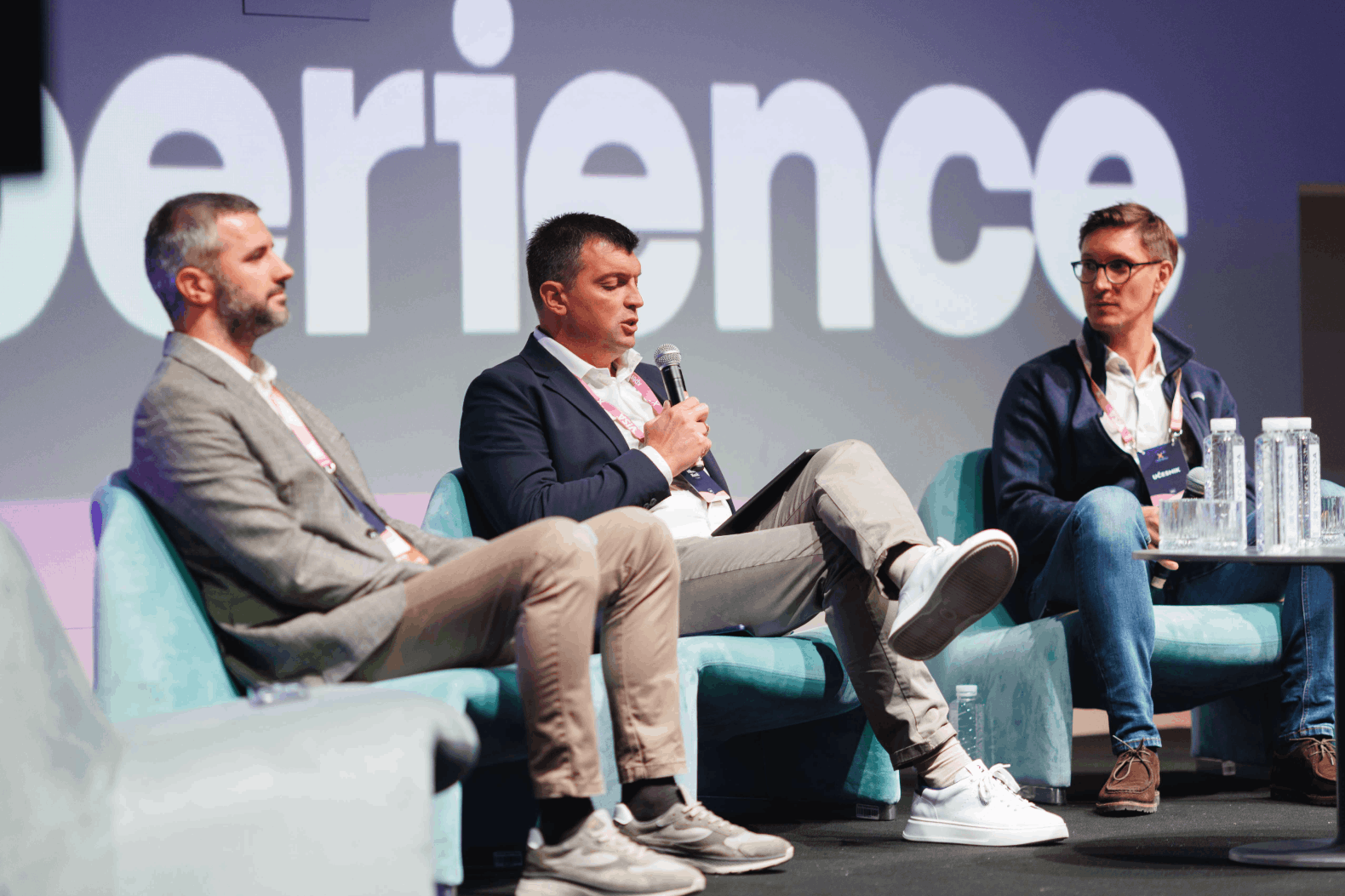From home to OOH delivery: Insights from XPERIENCE 2025

Over the past years, e-commerce has skyrocketed, with 77% of Europeans now shopping online, according to Geopost’s 2025 E-Shopper Barometer.
But the volume of online shopping is not the only thing that has changed. Online shoppers want more control over when and where they receive their orders.
The shift in consumer habits has put pressure on the existing last-mile delivery infrastructure, forcing the industry to change and adopt more flexible delivery methods – such as out-of-home delivery.
We had the pleasure of attending a Fireside chat at XPERIENCE 2025, where Nikola Riznić (CEO of Dexpress) moderated a discussion with Milan Stojković (IT Director of Dexpress) and Aleksandar Buha (Founder & CTO of Mily Tech) about how the adoption of OOH delivery unfolded and what the future of last-mile delivery looks like. Here are the key insights from their conversation.
The rise of OOH delivery in Serbia
“Last-mile delivery was born out of distribution, and it requires certain flexibility regarding delivery time and delivery location. Unfortunately, the urban environment does not favor the industry, and has ignored it for 20 years,” says Milan Stojković of Dexpress.
Intense traffic, narrow streets with no designated parking, and limited time for delivery vans to spend on the curbside, among other issues, inspired the company to explore alternative delivery methods.
According to Milan, the national post has slowly prepared us for OOH delivery before it even became a known method. “If the postman missed you at home, they’d leave a note and bring your parcel back to the post office. You’d then go and pick it up.”
Once the technology needed for parcel lockers became available in Serbia, Dexpress began expanding its OOH network and adding lockers in addition to its parcel shops.
Parcel shops seemed simpler to deploy than lockers, but they required customer identification, something the law didn't provide a framework for. “We had to develop our own solutions, like SMS verification codes, to confirm the right person was picking up their parcel,” Milan explains. Operational reliability was also an area of focus. "If someone gets a notification and arrives to find their parcel isn't there, you lose their trust immediately."
Market trends continued to raise the bar. Customers expected more sophisticated services: flexible pickup times, card payment options, and greater control over the delivery process.
An unexpected catalyst for change came from the global e-commerce platform Temu. "It really broke down prejudices about Serbia being a cash-on-delivery market," notes Nikola Riznić of Dexpress. "Suddenly, we had shipments that were 100% paid for upfront, which helped educate customers about online payments and made OOH delivery an even more natural step."
“Trends and customer expectations helped push the industry into this new direction. Suddenly, there was a whole new branch of last-mile delivery, with new regulations, its own trends, and specific needs,” Milan continues.

OOH goes mainstream across Europe
When it comes to the rest of Europe, the OOH expansion came naturally as a response to the COVID-19 pandemic, e-commerce growth, and workforce shortages.
However, the acceptance of this delivery method did not come without effort. Retailers and logistics providers had to educate customers and demonstrate the benefits of OOH delivery.
The speed of adoption and preferred OOH formats varied based on local culture and market context. In the Baltics, for example, parcel lockers have become the dominant choice. Customers appreciated the ability to pick up their parcels independently, without the need for small talk that is usually associated with home deliveries and staffed pickup points.
Today, with over 300,000 unique out-of-home points across Europe, the popularity of out-of-home delivery is undeniable.
“I remember going to the Parcel+Post Expo in 2022 and seeing that ¾ of the conference was about parcel lockers. At that point, we were just making the shift to develop a tool for building and managing OOH networks, and I thought – Yeah, we’re definitely focusing on the right thing,” says Aleksandar Buha, Mily Tech’s Founder and CTO.
But with the popularity came intense competition. As OOH networks expanded across Europe, so did their complexity, and various challenges started showing up at different stages of the network. “We’re helping one client that has over 20,000 locations optimize their network. You can imagine that at that size, there is an almost infinite number of steps you can take, which can be overwhelming. On the other hand, we also have a client who we’ve helped plan and deploy around 3000 new locations.”
Location, location, location
The backbone of good location choices has been, and will continue to be, data. “You need to take everything into consideration. The main factor should be the distribution of shipments, but you also need to think of the competition, potential partner locations, and the general location of the recipients. Knowing people’s daily travel routes and understanding mobility also helps,” says Aleksandar.
“Exactly, there was a need to break the illusion that you must choose home delivery and get parcels delivered to your apartment or work. In the same way, you need to break the illusion that parcel lockers must be near people’s homes. They should be at the locations you visit throughout the day, where you move. This is something people who don’t shop online frequently have to adopt,” adds Milan.
Home delivery as a luxury service
According to Milan, 10 years ago, people didn’t want to go somewhere and wait in line to get their parcel. They wanted to get their delivery in the comfort of their own home. Yet, today they’re more inclined to play an active part in the last mile. Waiting in line can still occur in parcel shops, so parcel lockers present themselves as a more efficient way to both receive and send parcels, and their popularity is expected to continue rising.
Aleksandar believes that home delivery will become a premium service, as it is more operationally inefficient and expensive compared to other delivery methods. “OOH will soon become the default choice, and if you want the luxury of having it delivered to your front door, you’ll have to pay a higher price.”






.png)
